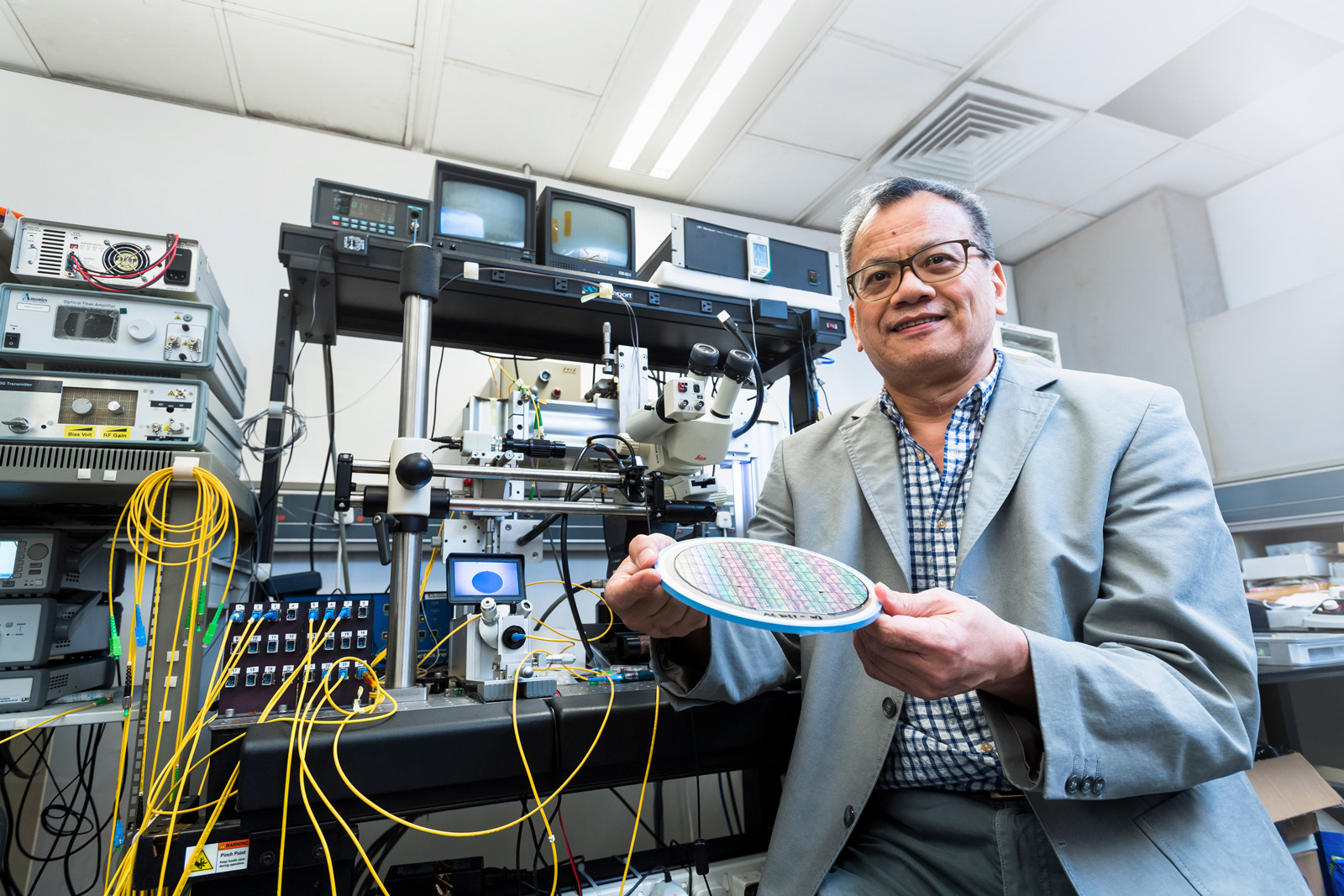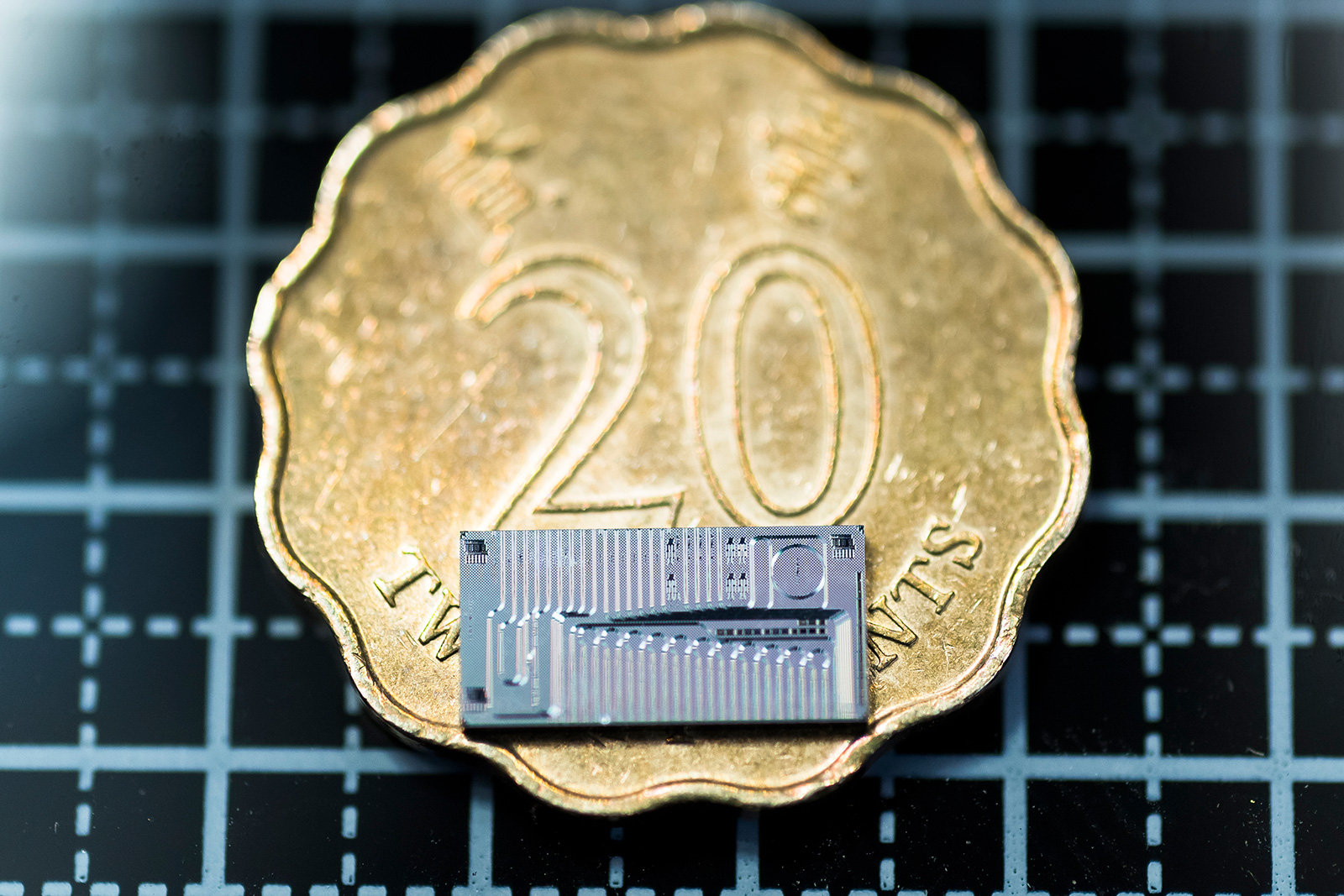New chips accelerate data transmission

A physicist from City University of Hong Kong (CityU) has played a pivotal role in advancing data transmission speed on the internet to make it the fastest in the world.
Such speed will facilitate downloading 1,000 high-definition movies in less than a second, according to the international team that undertook the research.
This exciting discovery helps to address the world’s increasing demand for faster internet connectivity, especially after the global outbreak of Covid-19, which has led to more people working at home and using technology for socialising and entertainment.
At the core of this technological advance is a novel chip developed by Dr Chu Sai-tak, Associate Professor in the Department of Physics at CityU. An expert in integrated photonic devices and with over 30 years’ research experience, Dr Chu works on the chip’s design and fabrication with Professor Brent E. Little of the Xi’an Institute of Optics and Precision Mechanics, Chinese Academy of Sciences.
Dr Chu’s research on chips has contributed to twelve high-impact papers published in the past nine years in prestigious journals such as Nature and Science.
The team’s accomplishments were recently published in Nature Communications under the title “Ultra-dense optical data transmission over standard fibre with a single chip source”. The team comprises researchers from Australia, Canada, mainland China and Hong Kong.

This research innovation demonstrates the capacity of micro-combs, which are optical frequency responses based on micro-ring resonators (MRRs), to perform ultra-high optical data transmission. MRRs are single, compact integrated chips that can supply all wavelengths and replace many parallel lasers.
The team has achieved an outstanding rate of 44.2 terabits per second (Tb/s) in a field trial led by Professor Dave Moss of Swinburne University of Technology, Australia, with a record breaking spectral efficiency of 10.4 bits per second per hertz (b/s/Hz), which is 3.7 times higher than existing records.
For this extraordinary transmission capacity, they have deployed a powerful class of micro-comb named soliton crystals.
“Soliton crystals within the micro-ring resonators are high in intrinsic stability and easy to generate, and thus are highly suitable for demanding applications such as ultra-dense optical coherent communication,” said Dr Chu.
Micro-combs enable breakthroughs in other fields such as microwave photonics, quantum sources and metrology.
The team will further explore scaling down the overall bandwidth by using multicore fibre as well as minimising the optical components by integrating the chips with modulators, for example.